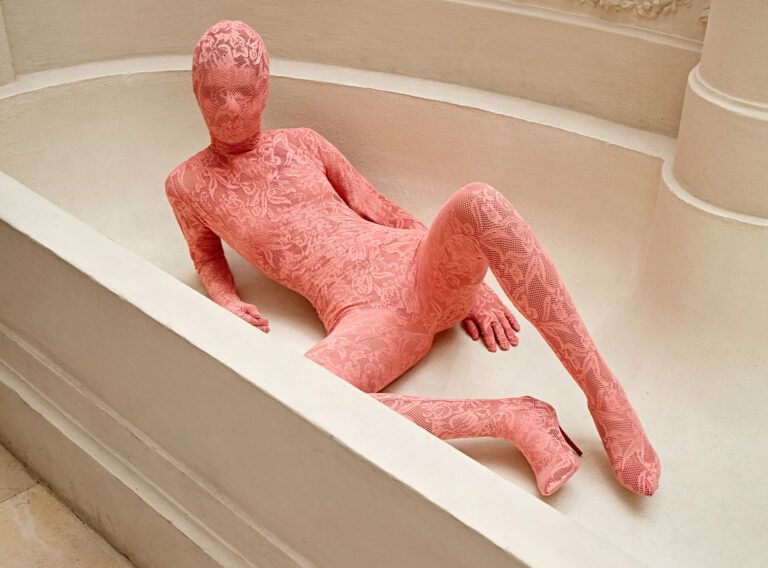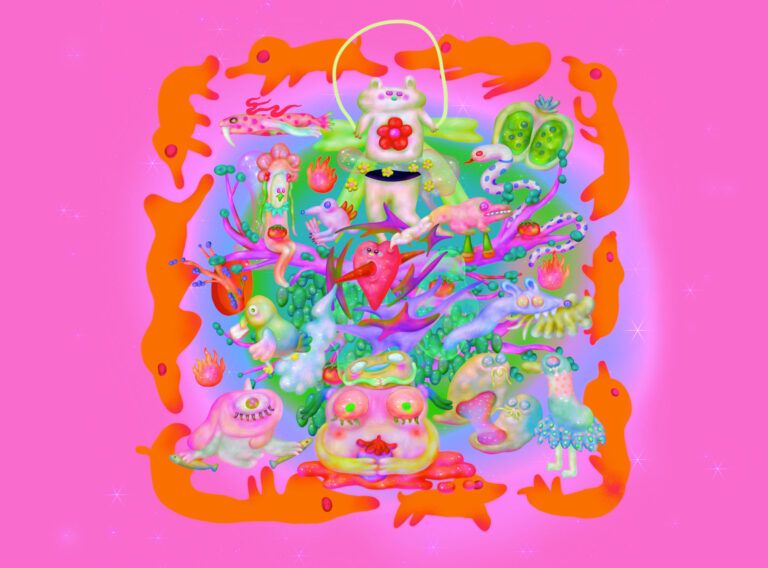When did you first start to discover your passion for art and what was the first medium you started working with?
I think of passion as immersion and cultivating immersion. And that has probably always been there. Like when my brother and I would play video games when we were little, and instead of collecting tokens to advance to the next round, we would figure out what all we could do in that area, how far we could go or how close we could get to something dangerous. I think there was a piranha of some sort and we were jumping over a digital pond and figuring out the lowest point we could be without getting bitten when we jumped, time was running out in the game but we didn’t care.



The first medium was writing in blood in a diary, creating ingredients in a cooking game, scraping plaster off the house and dissolving it in water – that was fake milk. Knitting and crocheting with my grandmother while watching Hercule Poirot and Dr Quinn. I used to crochet all the time, everything seemed like it could be crocheted. I found myself drawn to colours, textures and materials. I was interested in creating my own materials, I was learning to sew to be a designer, but then I needed something more free-form like painting. That was my first long immersion, and I’ve been immersed in it ever since, only years ago I added tattooing and knitting on a home knitting machine connected to an AYAB microcontroller that operates the machine’s needles according to the graphics I pour into it.



What are some of your favourite motifs that appear in both your artwork and tattoos?
The motifs I use in my tattoos and paintings are a lot about layering, contrasting soft coloured patches with a stark black line that floats above it. They are fluid shapes going from sea sponges to roots, from roots to a person growing like a mushroom, from a mushroom to something that is just emerging, being born, changing. And with my knitted webs, it is similar. I knit them with a very thin and fragile viscose yarn and then install them on rough textured concrete. I mostly weave texts in them, either mine or Luboš Svoboda’s poems. They are then as if whispered in a transparent web clinging to the surface.



What are the key differences between creating a work of art on canvas and tattooing?
Basically, it’s created in the same way. I’m constantly writing things down and sketching. During the day, I notice things, it could be anything from light hitting a surface, to the textures of stains on the walls of a house, to the vibe of a song; it all leads me to sketches and jottings, which snowball on top of each other. The final process is different in that with painting, I have to trust myself and let go and with tattooing, on the other hand, people have to let go and let me do it.


Do you have any specific goals or milestones you’d like to achieve in your artistic journey?
There are a lot of milestones and every time I reach for one, another one comes along, it’s a never-ending process and I’m glad for that. The feeling of having enough time, the luxury of boredom, is very important to me when making art. That’s my goal, to be able to be bored, to have more time for what I’m doing and what I want to educate myself in. It’s always been clear to me that I’m not going to be part of the 9-to-5 work life. That kind of schedule would be uncomfortable for me, and I’m glad I don’t have to undergo that because of the flexibility of tattooing. I’m also glad that there is at least some debate about a 4-day work week and 4 working hours a day.




